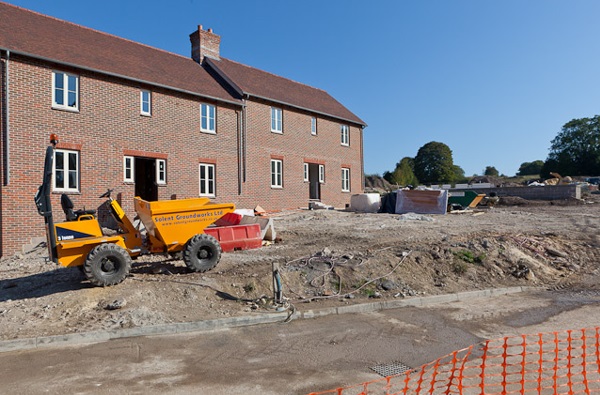Site clearance
The process of site clearance is generally undertaken as part of enabling works, carried out to prepare a site for construction. It involves the clearing the site to allow other remedial, treatment or demolition works to take place before the actual construction works can begin.
It involves clearing a site of any machinery or equipment, unwanted surplus materials, rubbish, and so on. Site clearance may also involve clearing away vegetation and surface soil, and levelling and preparing the ground for the planned construction works. Care should be taken to ensure that there are the correct approvals in place, particularly for trees which may be protected.
A site waste management plan (SWMP) may be prepared before site clearance begins. This describes how materials will be managed efficiently and disposed of legally, explaining how the re-use and recycling of materials will be maximised. All types of waste present on the site must be removed safely and efficiently. If there is any contaminated waste or potentially hazardous substances (such as asbestos), professional disposal experts must be consulted to safely handle them.
For more information, see Site waste management plan.
Site clearance might be carried out as part of the main construction contract, or it may be carried out in advance of the main contract, and might be part of a wider contract including other enabling works or facilitating works, such as; demolition works, soil stabilisation works, services diversion, constructing access roads, and so on.
[edit] Related articles on Designing Buildings Wiki
Featured articles and news
One of the most impressive Victorian architects. Book review.
RTPI leader to become new CIOB Chief Executive Officer
Dr Victoria Hills MRTPI, FICE to take over after Caroline Gumble’s departure.
Social and affordable housing, a long term plan for delivery
The “Delivering a Decade of Renewal for Social and Affordable Housing” strategy sets out future path.
A change to adoptive architecture
Effects of global weather warming on architectural detailing, material choice and human interaction.
The proposed publicly owned and backed subsidiary of Homes England, to facilitate new homes.
How big is the problem and what can we do to mitigate the effects?
Overheating guidance and tools for building designers
A number of cool guides to help with the heat.
The UK's Modern Industrial Strategy: A 10 year plan
Previous consultation criticism, current key elements and general support with some persisting reservations.
Building Safety Regulator reforms
New roles, new staff and a new fast track service pave the way for a single construction regulator.
Architectural Technologist CPDs and Communications
CIAT CPD… and how you can do it!
Cooling centres and cool spaces
Managing extreme heat in cities by directing the public to places for heat stress relief and water sources.
Winter gardens: A brief history and warm variations
Extending the season with glass in different forms and terms.
Restoring Great Yarmouth's Winter Gardens
Transforming one of the least sustainable constructions imaginable.
Construction Skills Mission Board launch sector drive
Newly formed government and industry collaboration set strategy for recruiting an additional 100,000 construction workers a year.
New Architects Code comes into effect in September 2025
ARB Architects Code of Conduct and Practice available with ongoing consultation regarding guidance.
Welsh Skills Body (Medr) launches ambitious plan
The new skills body brings together funding and regulation of tertiary education and research for the devolved nation.
Paul Gandy FCIOB announced as next CIOB President
Former Tilbury Douglas CEO takes helm.
























Comments